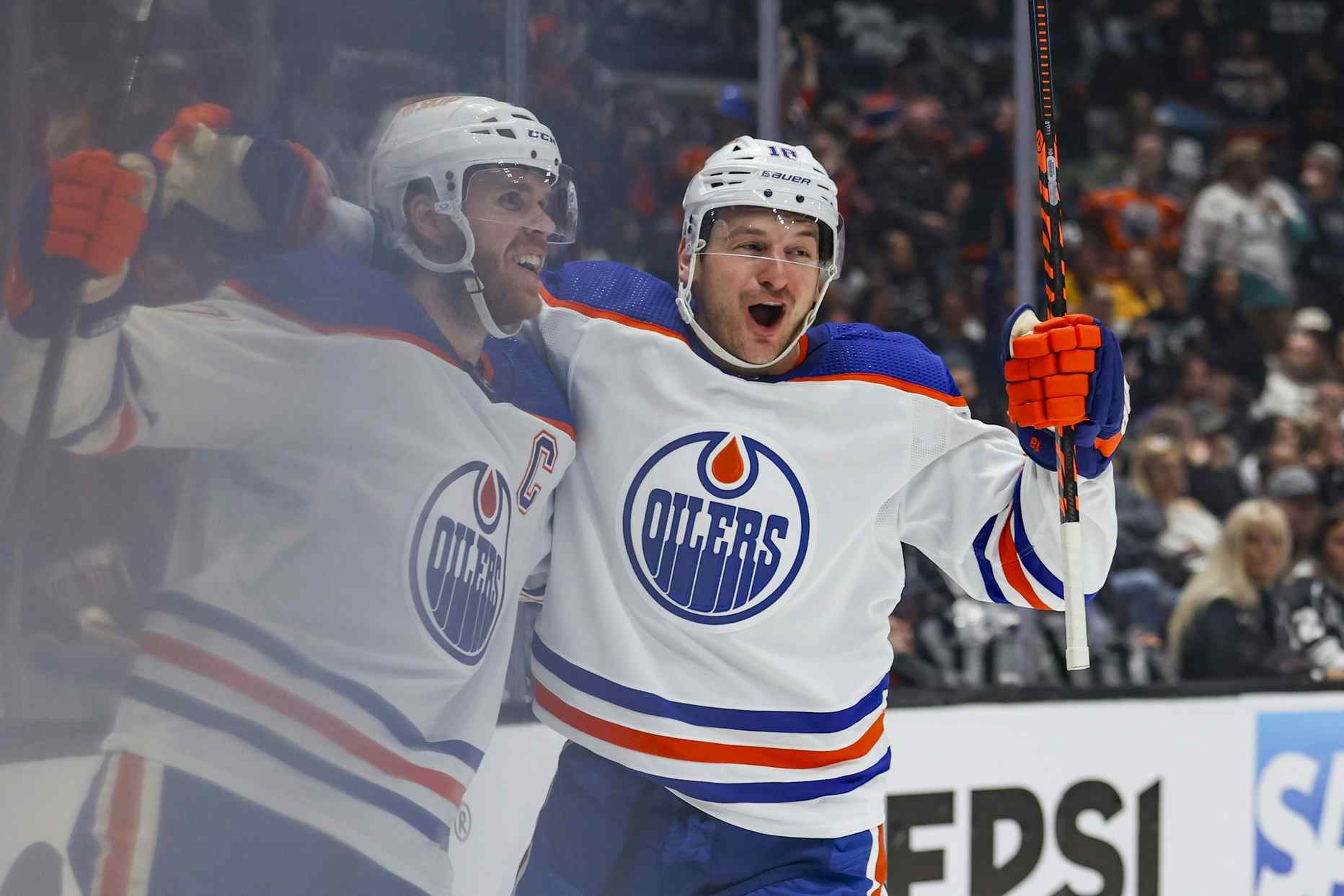Waiting on Ryan Smyth
With all the attention on free agent defenseman Justin Schultz, it’s easy to forget that the Edmonton Oilers have their own unrestricted free agent to deal with: Ryan Smyth.
The Oilers don’t appear to have forgotten, however. From ESPN’s Pierre LeBrun, Friday morning:
Pending UFA winger Ryan Smyth remains without a new contract as Sunday approaches. A source told ESPN.com that the Edmonton Oilers were slated to talk again with Smyth’s camp Friday.
From what we’ve been hearing in the press, it doesn’t sound like negotiations have gone particularly well. That’s not a huge surprise, particularly since Smyth essentially had two seasons – the 2011half, where he was a top-line caliber winger (37GP – 14G – 16A – 30PTS) and the 2012 half, where he was something else (45GP – 5G – 11A – 16PTS). Given his age, it makes sense for the Oilers to argue the latter is more likely to indicate future performance than the former; on the other hand, I’d be surprised if Smyth’s camp wasn’t arguing based on the whole-season numbers.
Let’s start by looking at shooting percentage. Player’s typically get hot and cold over a season, but in the end revert to their career shooting percentage level. Smyth, as a crease-crasher and guy who takes shots from in close, has a slightly better than average shooting percentage on his career – 11.6%. He’s had some good years (2006-07, where he fired 17.1% en route to his last, massive contract) and some bad years (2007-08, 8.3%) but he’s general around that mark.
Split Season
In the 2011 half of 2011-12, Smyth fired 14 goals on 98 shots. That’s a 14.2% shooting rate, significantly better than his career average. In the 2012 half of 2011-12, he scored five times on 96 shots – a 5.2% shooting rate, or a little less than half of his career average. If he scores 11 goals in 2012 (that’s the total his career SH% puts him at on 96 shots) we’d be talking a lot less about his decline and fall.
The truth is that Smyth got some help from the percentages in posting his early season numbers – his on-ice even-strength shooting percentage was a remarkable 11.2%. How remarkable is that? The Oilers as a whole were near the league average, at 8.1%. That means that with Smyth on the ice, his line was 40% more likely to score a goal on any given shot than a team-average line.
Steady as She Goes
In short: what we’re looking at in both the first and second half of the season is percentage-based fluctuation. Smyth’s shot rates dipped minutely later into the year (even as his shot-based metrics, like Corsi, improved with the team’s late season spike) but not much – he really wasn’t playing all that differently than he had been to start the year. The difference is that at the start of the year he looked much better than he was (thanks to percentages) and at the end of the year he looked much worse than he was (thanks again to percentages). If I had to bet, I’d gamble that his full-season numbers are a fairly accurate predictor of his offensive ability next season.
Smyth’s real value comes from two-way play. He played the toughest available competition this year, and started far and away more often in his own end than in the offensive zone. He may not have excelled in that role over the course of the entire season, but he generally held his own and (again over the whole season) found a way to contribute offensively.
This is what separates him from guys like Milan Hejduk and Todd Bertuzzi, both commonly cited in the comments section as comparable players. Smyth out-scored both of them – Hejduk had 37 points, Bertuzzi 38, Smyth 46 – while playing far tougher minutes. Hejduk saw middling opponents and got a ton of time in the offensive zone; Bertuzzi was less sheltered but still got more favourable minutes than Smyth (to say nothing of the fact that Pavel Datsyuk is a slightly better NHL’er than Shawn Horcoff).
In some ways it would be surprising if there wasn’t a significant gap. The Oilers are probably looking at Smyth as an old guy who isn’t a long-term fit, one whose offensive game declined as the year went on, and a guy bound for third-line duty. Smyth’s camp undoubtedly sees a two-way player who can still contribute offensively and would have significant interest on the free agent market (and there’s no question that Smyth would get interest from other teams).
Perceptions
Interesting to me has been fan reaction. When Smyth left last time, fans were angry – and Smyth earned something like an extra $750,000 per year on the free agent market, which over five years is a healthy chunk of money, to some degree validating his refusal of the Oilers’ offer (the Oilers could have matched that easily had they not overpaid Ethan Moreau, Steve Staios, and Fernando Pisani, but I digress).
This time around, the general consensus seems to be ‘he can take what the Oilers are offering or else he can hope the door doesn’t hit him on the way out.’ It strikes me as odd. The only reason the Oilers had Smyth last year – and got him for virtually nothing, asset-wise – is because he moved heaven and Earth to get back to Edmonton. Now, if a deal isn’t settled, he’s going to get most of the blame.
I’m not saying the Oilers need to bow to every whim from Smyth’s agents. It just seems to me that the penalty-kill looked way better with him on it than with him off it, and that the Oilers don’t really have another option at left wing to play defensive minutes. Sure, they could push Hall into that role – at an offensive cost, or gamble Paajarvi learns fast, or hope Lennart Petrell is a much better hockey player this year than he was last year, but none of those things are likely to happen. For all their vaunted depth on wing, the Oilers are painfully short of two-way presence. Particularly big two-way presence that plays with a little chippiness (Smyth, like few others on the team, never hesitated last year to get his elbows up if someone was coming in for the big hit). It also seems to me that given the team’s unhealthy tendency to toss money at people like Andy Sutton, and worse, Cam Barker, that paying market value for Smyth on a one-year deal isn’t a terrible idea.
It may all work out in the end, but somehow I’m skeptical. The last time around, Smyth left for more money and the Oilers suffered. I’m betting the same thing happens once again.
This week by Jonathan Willis
- Jay Grossman talks about the Khabibulin contract
- The UFA market for defensemen: it’s going to get ugly
- Ralph Krueger: in the driver’s seat
- Oilers’ development camp invites
- Jets re-sign Ondrej Pavelec, pay top dollar
- Oilers issue qualifying offers to seven
- Report: Oilers interested in Blackhawks’ defenseman Niklas Hjalmarsson
- The 2012 NHL Entry Draft: Recap
- Should the Oilers have made a pitch for Zbynek Michalek?
- The Oilers select forward Mitch Moroz 32nd overall
- The Jets select Lukas Sutter 39th overall
- The Canucks select Alexandre Mallet 57th overall
- The top five ranked players left after the end of the first round
Recent articles from Jonathan Willis





